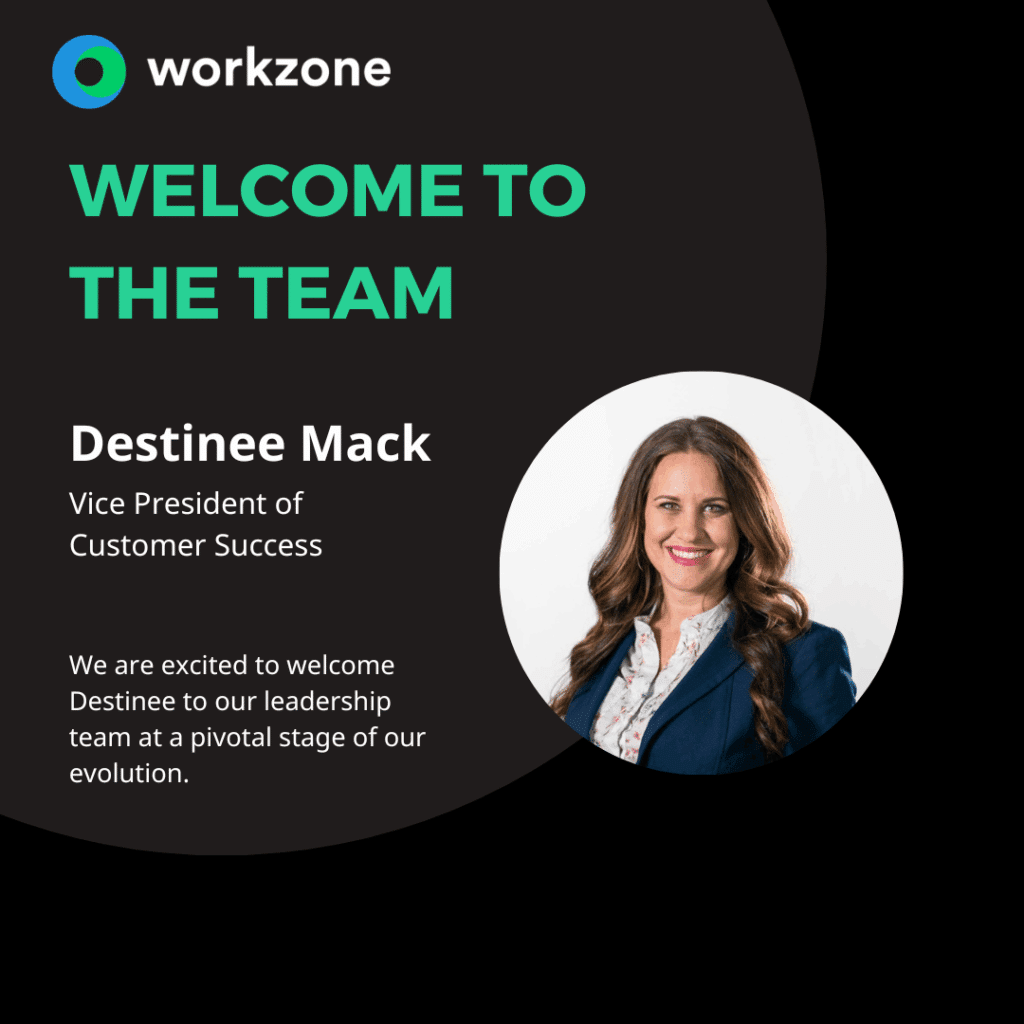14 Higher Ed Marketing Leaders Share Their Top Digital Strategy Tips

Digital marketing in higher education is an essential part of recruitment, retention and communication process.
From enrollment to on-campus awareness, creating an effective digital strategy helps colleges and universities target the students that are right for their school, and reach others who may be part of their persona but not know it. Higher education digital marketing is also important in connecting with alumni who may be active boosters and supporters or could be re-engaged with specific strategies.
But what are the best practices for accomplishing all of those goals? What works….and what doesn’t?
To help answer those questions, we reached out to several university marketers with experience in digital marketing to see how they’re shaping their digital strategy. Below are their tips, tactics, and strategies for effective higher ed digital marketing.
[mention name=”Andy Shaw” title=”Director of Enrollment Operations and Communications” company=”York College” companylink=”https://www.ycp.edu/” image=”https://www.workzone.com/wp-content/uploads/andy-shaw-york-college.jpg” linkedin=”https://www.linkedin.com/in/andyrshaw/”]
It’s not enough in digital marketing to say “We’re looking at analytics” or “We’ve got a vendor helping us with SEO.” Let’s be honest: Any college worth its FAFSA is likely doing all of those things and more. And those things certainly are important — you need to know who is coming to your website and where they go when they are on there, as well as making sure the right people see the right content. But you knew that.
What I like to shout from the digital rooftops — so, um, my desk chair? — is that colleges and universities would do well to remember they are marketing to people. Just because it’s fancier and more complex and more nimble than a single e-blast or a giant brochure doesn’t mean you should lose your personal touch. I do not mean “personalization.” Of course you’ll be doing that. Of course you’ll use their first name and their specific major, and maybe customize a few other things, too. Teenagers know you are doing that. It’s a great touch.
But if you were going out on a date, would it be enough to impress them if you used their first name and remembered where they work? Or would your date still want warmth and good conversation and comfortability?
Your digital marketing still needs to sound like a real person. Write like you speak. Write like you want somebody to actually read it. Write like it’s not just another check mark on your to-do list. Make every word count. Because in a digital world with millions of words vying for each set of eyes, it does.
[mention name=”Melissa Ruidiaz” title=”Director of Marketing Communications” company=”Nova Southeastern University” companylink=”https://www.nova.edu/” image=”https://www.workzone.com/wp-content/uploads/melissa-ruidiaz-nova-southeastern.jpeg” linkedin=”https://www.linkedin.com/in/melissaruidiaz/”]
Key performance indicators (KPI’s) are the key to digital marketing strategy within higher education or any industry. If you do not know why you are running a campaign and what you are measuring, then you are wasting money! When setting up a digital campaign strategically, you need to understand not only key strategic factors like your target audience (including demographics, geographic considerations, psychographics, behavior, etc.) to identify the best channels to reach this audience(s) but you need to know what is your end goal to decipher whether or not your dollars were well spent, ongoing campaign refinements, and ultimately ROI (return on investment).
So ultimately is your goal to capture leads? If so, you need to take it a step further and understand cost-per-lead, cost-per-acquisition, lead count and many other web performance indicators to measure against channel performance, geographic performance, and so on. At the same time these KPI’s will let you know how your web presence measures up – is your landing page or microsite effective, do you have engaging content, is the click-thru rate and completion on a web form performing at optimal level? I can go on and on, there are many factors but ideally identifying your KPI’s during strategy development will go a long way to set you and your digital campaign up for success!
[mention name=”Jeff Harmon” title=”Executive Director of University Communications and Marketing” company=”Southeast Missouri State University” companylink=”https://www.semo.edu/” image=”https://www.workzone.com/wp-content/uploads/jeff-harmon-semo.jpg” linkedin=”https://www.linkedin.com/in/jeff-harmon-abb4422/”]
A little pro tip – If you have admissions folks visiting schools or companies, do some display or social ads geofenced to that building.
[mention name=”Deborah Brent” title=”Associate Vice-President of Enrollment Management and Marketing” company=”Virginia International University” companylink=”https://www.viu.edu/” image=”https://www.workzone.com/wp-content/uploads/deborah-brent-viu.jpg” linkedin=”https://www.linkedin.com/in/deborah-brent-a04050b/”]
One word emphasized would be – STRATEGY. Let’s assume every college or university has a presence on the web. So what makes your institution different? How can you stand out amongst the masses? These are the million dollar questions for all of us. It starts with internal assessment and defining your branding and potential market share. Then start with the obvious – your Website. Does it tell your story? Is it easy for all your defined audiences to navigate for information? Is it interactive and engaging with video embedded?
And finally, are you seeing more new applicants and students coming through your site? Test out your website for Search Engine Optimization (SEO) to make sure you pop. Does your institution appear in the top five when you do your search?
If not, go back to STRATEGY. Of course, we cannot forget about our social media presence along with pay-per-click (PPC) and pay-per-lead (PPL) campaigns. Facebook reigns supreme followed by YouTube, Twitter, and Instagram for Social Media sites.
There are more up and comers in social media, so always be learning. However, social media works in real time and you must supply the content and resources to stay relevant. A website alone won’t do it these days.
Are you employing landing pages for pay-per-click to capture targeted leads and are you employing third-party microsites for pay-per-leads for your digital presence? Partnering with a company that specializes in digital marketing and lead/applicant generation may be a necessity to bring it all together.
But beware of the third-party sales pitch and choose wisely per your paid search campaigns handled by vendors as they are about making money. Do thorough research and screen several vendors for the right fit for your institution. Be sure you analyze your data and sources for constant changes to drive your results from paid search campaigns provided by outside vendors. Remember, you have more skin in the game for your institution than others. Digital marketing is static, so have a plan to evaluate and update weekly.
Since digital marketing is ever-changing, what helps me in staying current is through Webinars in this realm that are hosted by various higher education research firms, such as Noel-Levitz and Chegg. Having my internal marketing team invested in the digital marketing strategy is a necessity with each staff member assigned to a specific arena – website, social media, and third-party PPC/PPL campaigns.
There is no going back as digital marketing is here to stay. Students are making their higher education choices per your online presence. Does your presence elicit the results you need today to meet your enrollment potential? It all goes back to that one word – STRATEGY.
[mention name=”Meghan Williams” title=”Manager of Web Communications and Strategy” company=”Radford University” companylink=”https://www.radford.edu/” image=”https://www.workzone.com/wp-content/uploads/meghan-williams-radford-university.jpeg” linkedin=”https://www.linkedin.com/in/imeghanwilliams/”]
Higher education digital marketing strategies must recognize the relevance of content and balance use of traditional social media platforms with more spontaneous platforms. We must appreciate that our users are continuously engaged with their mobile devices. Institution websites and social channels should be designed in a way that makes them easy to navigate and skim read, but also have engaging content that offers cinematic-like, memorable experiences. Additionally, non-emergency texting is an evolving strategy, allowing direct engagement with prospective students, providing individualized attention and meaningful, interactive experiences. Robust, personalized experiences help lead prospective students to enroll, as well as engage alumni and supporters.
[mention name=”Hailee Tavoian” title=”Associate Director of Strategy for Advancement Communication & Marketing” company=”Ohio University” companylink=”https://www.ohio.edu/” image=”https://www.workzone.com/wp-content/uploads/hailee-tavoian-ohio-university.jpeg” linkedin=”https://www.linkedin.com/in/hailee-tavoian-2468a349/”]
You have to know your audience. Understanding their preferences, behaviors and values is the only way to effectively communicate with them. Think of every piece of content shared–down to a simple tweet–as being an element of your on-going conversation with an individual human being. Take Dale Carnegie’s advice in How to Win Friends and Influence People, and demonstrate that you are invested/interested in them, rather than constantly trying to get them interested in you (paraphrasing). We love the brands/products we do because they make us feel good about us. Do that for your prospective/current students and alumni and they will respond with interest and loyalty.
[mention name=”David May” title=”Associate VP of Web and Digital Media” company=”Chapman University” companylink=”https://www.chapman.edu/” image=”https://www.workzone.com/wp-content/uploads/david-may-chapman.jpg” linkedin=”https://www.linkedin.com/in/yamdivad/”]
There are more than a few critical elements to successful digital marketing at colleges and universities today, but among the most important is an emphasis on data-informed decision making. Gut-reactions and undisciplined instincts are a thing of the past – well, they should be. We now have the ability to measure our marketing experiments and repeat only successful ones.
Unfortunately, it is typical for colleges and universities everywhere to use the “shotgun” approach. That is where marketers shoot collateral and digital assets out into the world, hope something sticks, and skip the measurements at the end.
Another key to successful digital marketing is to incorporate inbound marketing practices. According to Mashable’s Lauren Drell, “the inbound marker practices new marketing: any marketing tactic that relies on earning people’s interest instead of buying it.” The best example of inbound marketing is what I am doing right now. Lauren Drell “earned” a link to Mashable by creating such a comprehensive post on inbound marketing.
[mention name=”Daniela Huynh” title=”Assistant Director of Marketing” company=”Quincy College” companylink=”https://quincycollege.edu/” image=”https://www.workzone.com/wp-content/uploads/Daniela-Huynh-quincy-college-e1503334051237.jpg” linkedin=”https://www.linkedin.com/in/danielahuynh/”]
No automation. As marketers, we here to build lasting relationships with our customers. You can’t build customer relationships that have a solid foundation of trust and confidence if you use automated responses. So be present when you engage with your students.
Feedback is what drives digital strategy. All successful digital marketing campaigns utilize active listening. If you know where your students are coming from, what they’re looking at, and what they say about your institution, you can use that information to determine how you inform, persuade, and connect with your audience digitally.
[mention name=”Kendall Dillon” title=”Vice President, Marketing and Communications” company=”Grandview University” companylink=”https://www.grandview.edu/” image=”https://www.workzone.com/wp-content/uploads/kendall-dillon-grandview.jpg” linkedin=”https://www.linkedin.com/in/kendall-dillon-004a356/”]
The most important aspect of an effective digital strategy is making sure it aligns with your overall marketing and recruiting goals. It’s easy to try to do too much. A good strategy should include a combination of digital activities (search, digital, video, social, website, CRM, automation, etc.) that you believe will solve your problem. Good strategy involves making decisions about what not to do as much as it is about what you decide to do. And being alert and adaptable (monitoring, optimizing, testing) so the decisions you do make ultimately end up successful.
[mention name=”Becky Brackin” title=”Director, Communications and Marketing” company=”Angelo State University” companylink=”https://www.angelo.edu/” image=”https://www.workzone.com/wp-content/uploads/becky-brackin-angelo-state-university.jpeg” linkedin=”https://www.linkedin.com/in/rebekahbrackin/”]
Planning is everything. With so many digital marketing platforms available, we have often found ourselves in a reactive stance. Proactively developing a workflow and communication system to manage all these tools is key. We learned through experience and, admittedly, some anxiety!
Our team combines research, dashboards, and anecdotal feedback from our campus clients to plan our approach to digital marketing. We determine the audience(s), information consumption preferences and expected results and then decide which digital tools are appropriate.
We use that information to create Workzone templates and projects for digital media – from website modifications to email campaigns. We build client communication points into multiple stages of every campaign.
Digital marketing also requires collaboration and communication within our team, from designers, web developers, to copy writers. Team work through the process of creating campaigns is essential.
With advance planning and staging done, our team can be more comfortable about focusing on messaging and driving results.
[mention name=”Kelsey Batten” title=”Assistant Vice President for Marketing & Communications” company=”Ivy Tech Community College” companylink=”https://www.ivytech.edu/” image=”https://www.workzone.com/wp-content/uploads/kelsey-batten-ivy-tech.jpg” linkedin=”https://www.linkedin.com/in/kelsey-batten-14509914/”]
Ivy Tech Community College utilizes digital in a variety of ways, for a variety of purposes. Regardless of the outcomes and objectives, the key to a successful Ivy Tech digital marketing strategy is continued review of the data and analytics. Digital is so powerful with the analytics it provides for users, those that engage, those that take an action, to demographic information such as gender, age, and location. Continual review of the data allows Ivy Tech to optimize, be nimble with its approach and try new tactics if needed.
Another key for a successful digital marketing campaign is knowing your target audience by identifying their behavior and searches online. Every person consumes digital media differently, and it is important that we partner our knowledge from the data and analytics to find our target audience where and when is it most relevant for them.
[mention name=”Cary Heyer” title=”Director of Communications and Strategic Marketing ” company=”Madison College” companylink=”https://madisoncollege.edu/” image=”https://www.workzone.com/wp-content/uploads/cary-heyer-madison-college.jpg” linkedin=”https://www.linkedin.com/in/cary-heyer-apr-a863739/”]
I’m always a little queasy when folks talk about their digital marketing “strategy.” Digital marketing is a tool that complements the other tactics that are part of your marketing mix; it does not have its own strategy.
I can’t take credit for this example — I can’t recall the source — but this metaphor is an excellent illustration of the relationship between digital and other channels: Let’s say you’re walking past your neighbor’s garden. Dozens of perfectly ripe, fragrant tomatoes are weighing down the vines, which must be five feet tall. On the wall of the adjacent shed hangs numerous garden tools — shovels, hoes, rakes, pruning shears … you get the idea. If you want to learn the gardener’s secrets for a bumper crop of beefsteaks, do you ask about her hoe strategy? Her shovel strategy? Of course not. Each are tools that are part of an overarching strategy to grow tomatoes that will win all the ribbons at the county fair.
Similarly, your digital marketing efforts cannot stand alone. They must be in sync with other tactics, integral elements of a comprehensive strategy that is attached to a goal and supports one or more of the objectives you have set forth.
[mention name=”Kimberly Lally” title=”Executive Director of University Marketing” company=”University of Dayton” companylink=”https://udayton.edu/” image=”https://www.workzone.com/wp-content/uploads/kim-lally-dayton.jpg” linkedin=”https://www.linkedin.com/in/kim-lally-ba899032/”]
Digital marketing is a powerful tool, allowing us to target, reach and engage with audiences – wherever they are. That said, people don’t consume content in silos. If our digital tactics operated in a vacuum, it could result in a disjointed message that confuses our audience and weakens our message.
At the University of Dayton, integrated marketing is key. We take a holistic approach to creating, distributing and measuring our efforts – both print and digital. Why? It provides a seamless experience for the audience, reinforces messages and drives greater brand lift.
For every project, we start with the goal. We then build a multi-channel marketing plan, which expands our reach and exposures. Copy and design are tailored to each platform but retain a similar look and feel. Launch dates are coordinated across platforms. The goal? Ensuring the audience sees a cohesive message, whether it’s in a digital ad, email, website, social media, video, brochure or direct mail.
Finally, we measure performance on each of our channels. By evaluating metrics, we can optimize performance of current and future campaigns – and put more resources to the channels that are performing best.
[mention name=”Audrey Takacs” title=”Director of Marketing and Communications” company=”Macomb Community College” companylink=”https://www.macomb.edu/” image=”https://www.workzone.com/wp-content/uploads/audrey-takacs-macomb-comm-college.jpeg” linkedin=”https://www.linkedin.com/in/audreytakacs/”]
Have a marketing plan that sets your goals and identifies your target audience. Next, understand the demographics and online behaviors of your target audience. For us, a digital strategy is a must for reaching digital natives and millennials (our primary target audience). Working with a media agency that understands our goals, the digital landscape, and how to negotiate media buys has been critical to our success. It’s important to set and monitor performance metrics, and change media tactics as needed. The digital landscape and consumer behavior are constantly changing. Be flexible, take risks and adopt a “test and learn” approach!
What’s the digital strategy for your college or university? What can you do to improve it?
Last updated on June 5, 2025




